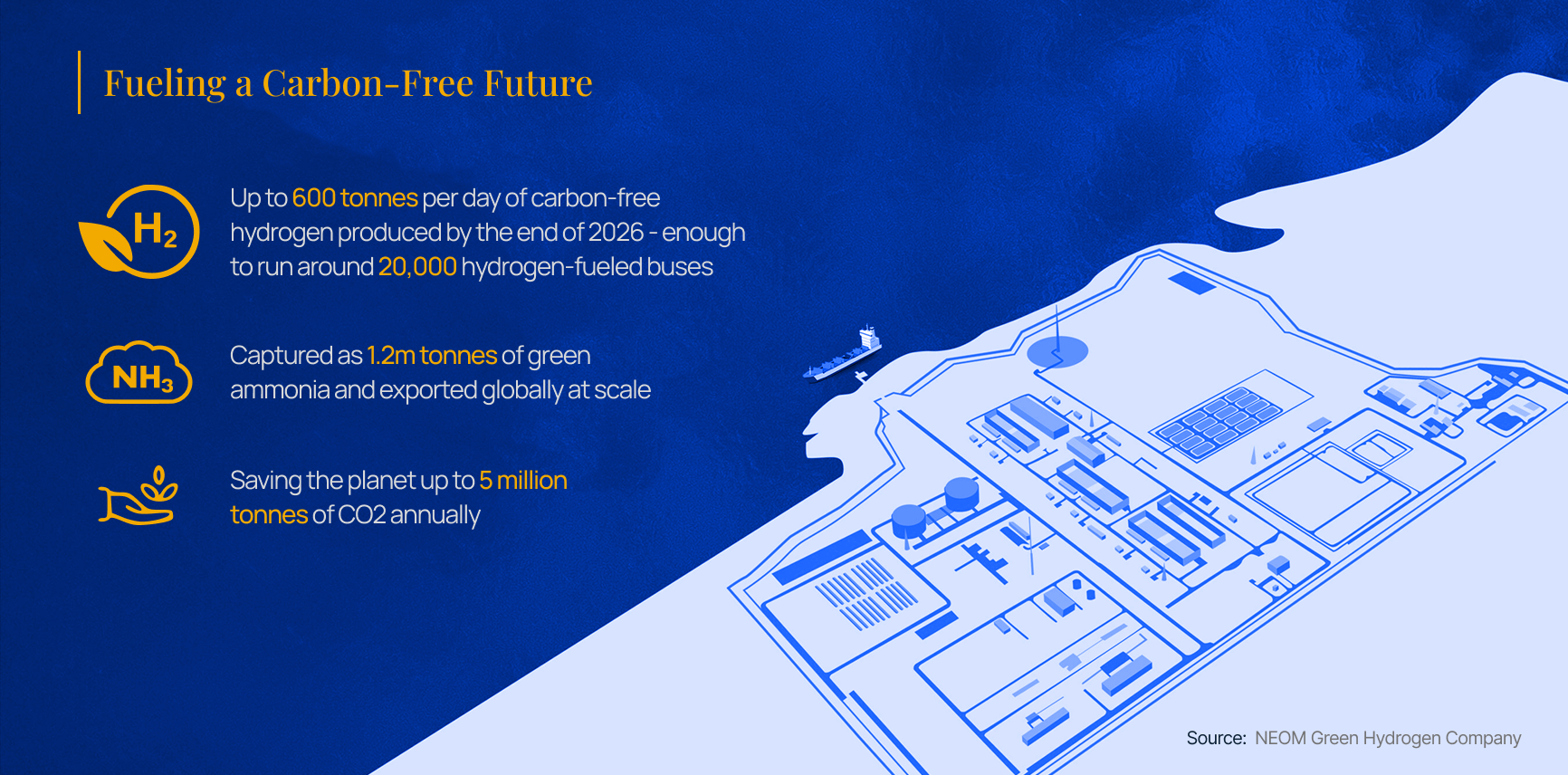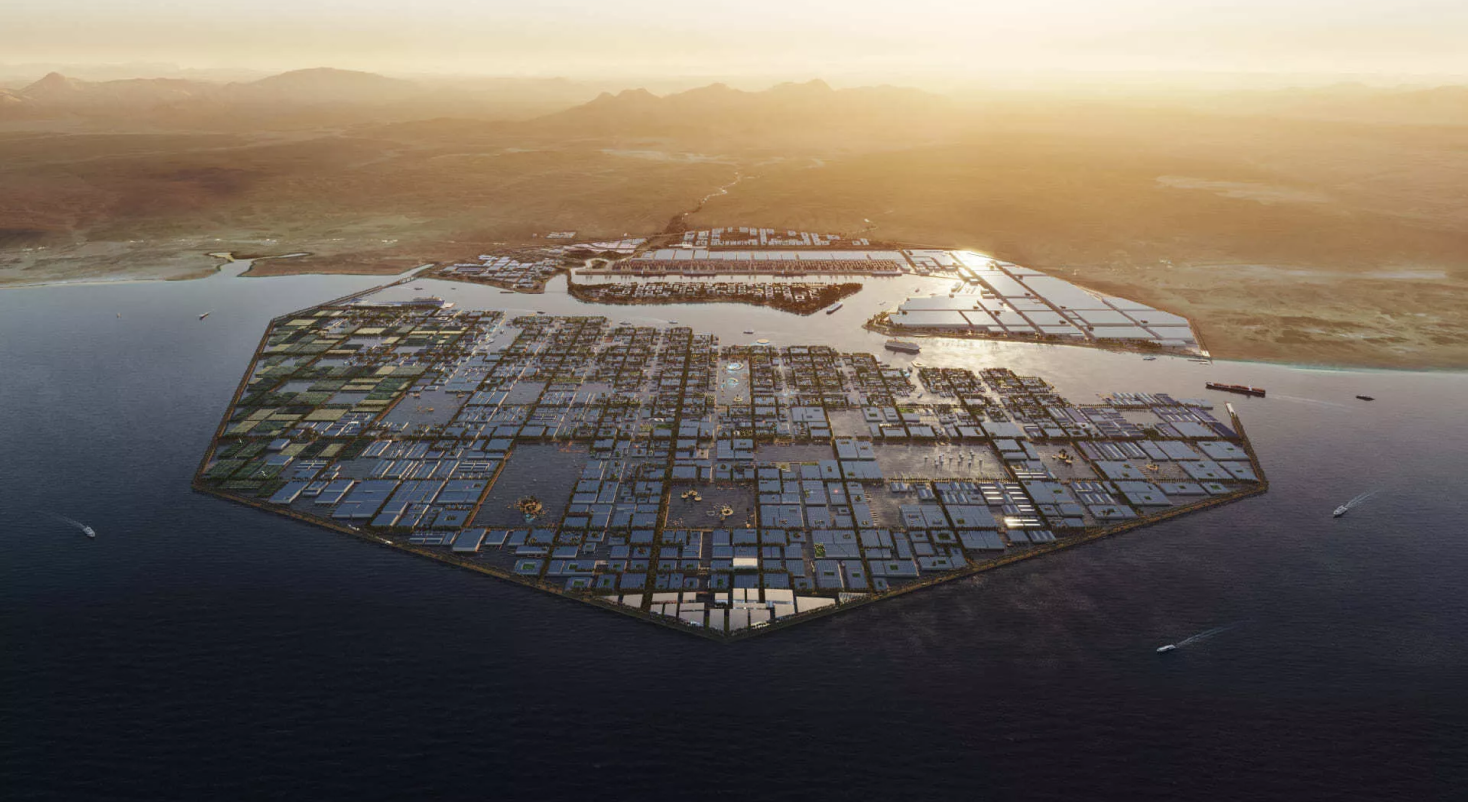The future of energy is green, and Saudi Arabia is taking a giant leap towards that future. According to Al Arabia News, the NEOM Green Hydrogen Company (NGHC), worth roughly $8.4 billion, is set to be the world’s largest green hydrogen production plant. This ambitious project, now 60% complete, will be powered entirely by approximately 4 GW of dedicated on-site solar and wind energy. The facility aims to produce up to 600 tonnes of carbon-free hydrogen per day by the end of 2026. In addition, once fully operational, the project is expected to create around 300 direct jobs.

An extraordinary project
According to CEO Wesam Al-Ghamdi, “this isn't just another green energy initiative; it's a project being built at a scale no one has attempted before." The plant will utilize 2.2 gigawatts of electrolyzer capacity, powered entirely by Saudi Arabia's abundant solar and wind resources, to produce green hydrogen continuously. Created through electrolysis using renewable energy, this hydrogen is a crucial step in reducing global carbon emissions, as it emits no greenhouse gases during production.
Why green hydrogen matters
Green hydrogen has the potential to transform industries that heavily rely on fossil fuels, such as heavy-duty transport and steel production. As the world pushes for decarbonization, green hydrogen is emerging as a viable and sustainable alternative. However, the high costs and scalability challenges have hampered its extensive adoption.
What the green hydrogen will be used for
The green hydrogen produced at NEOM will play a key role in reducing global carbon emissions by replacing fossil fuels in industries that are hard to decarbonize. It will specifically be used to fuel heavy-duty transport, such as trucks and ships, and support steel production, which traditionally relies on coal.
Methanol plant
NEOM, through its energy and water company ENOWA, has awarded a contract for a CO2-to-methanol and methanol-to-gasoline demonstration plant. This plant is being developed in collaboration with Aramco and will be located at ENOWA's Hydrogen Innovation and Development Center (HIDC). It will utilize green hydrogen and captured carbon dioxide to produce approximately 12 tons of methanol per day.
NEOM's competitive edge
NGHC aims to overcome these challenges by leveraging Saudi Arabia's natural advantages. Al-Ghamdi highlights the cost benefits of utilizing the region's abundant solar and wind energy. "We have the abundance of solar and wind, so we have that renewable power competitive advantage," he explains. The large-scale setup at NEOM allows for efficient production at a cost level that few can match globally. According to Middle East Briefing, “in terms of strategic collaborations, NEOM has partnered with leading global organizations such as Van der Hoeven, Bechtel, and McLaren to drive innovation, sustainability, and technological advancements.”
Vision 2030 and Saudi expertise
Strategically located within NEOM, in Saudi Arabia’s northwest Red Sea development zone, the plant is a key component of Crown Prince Mohammed bin Salman’s Vision 2030 initiative. This initiative aims to diversify Saudi Arabia's economy away from oil and into new industries such as renewable energy, tourism, and technology.
Building local expertise is also a priority. Over 60% of NGHC’s workforce comprises Saudi citizens, including experienced professionals and recent graduates. Partnerships with Saudi universities and specialized training programs are in place to develop the highly technical skills needed for this cutting-edge facility.
Innovation and optimization
NGHC has also partnered with Germany’s ThyssenKrupp for a 10-year research and development project to refine and optimize their electrolyzer technology. The early installation of the first electrolyzer, set to go online before the full facility launch, will provide valuable operational insights. This proactive approach aims to streamline processes, reduce maintenance costs, and extend equipment life cycles.
A model for the future
Al-Ghamdi believes that NEOM's project is uniquely positioned to capitalize on Saudi Arabia’s natural advantages. "We have the scale, location, and the partnerships in place that give us a significant lead," he states. NGHC stands as a potential model for the Kingdom’s broader push into renewable energy and a major contributor to the Vision 2030’s economic transformation goals.
Conclusion
The NEOM Green Hydrogen Plant is not just a production facility; it's a catalyst for change, representing the potential of green hydrogen to reshape the global energy landscape and pave the way for a more sustainable future.
Contributors

Adeel Ahmed
Research Editor

Share With